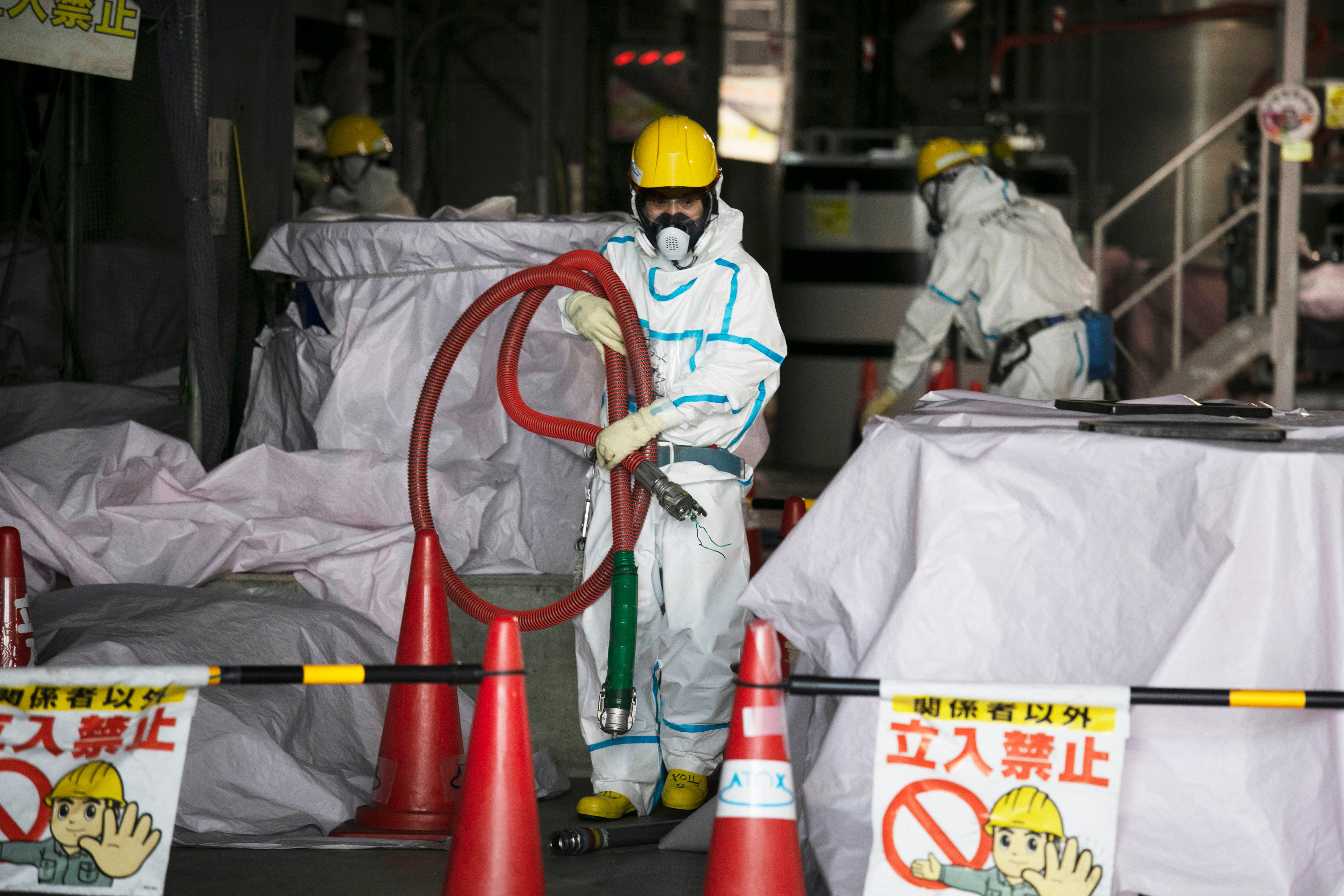

Removing fuel units from the cooling pools comes ahead of the real challenge of removing melted fuel from inside the reactors, but details of how that might be done are still largely unknown. Study links Fukushima disaster to rise in infant heart surgeries A satellite view of the Fukushima Daiichi nuclear power plant days after it was hit by a massive earthquake and tsunami on March 11, 2011, causing the release.TEPCO says the removal at Unit 3 will take two years, followed by the two other reactors, where about 1,000 fuel units remain in the storage pools. The fuel units in the pool located high up in reactor buildings are intact despite the disaster, but the pools are not enclosed, so removing the units to safer ground is crucial to avoid disaster in case of another major earthquake similar to the one that caused the 2011 tsunami. said workers started removing the first of 566 used and unused fuel units stored in the pool at Unit 3. Meanwhile, in the actual city of Fukushima, the populace within a 12-mile radius has been evacuated due to the possibility of a meltdown.Tokyo - The operator of the tsunami-wrecked Fukushima nuclear plant began removing fuel Monday from a cooling pool at one of three reactors that melted down in the 2011 disaster, a milestone in what will be a decades-long process to decommission the facility.No radioactive materials should be found outside the reactor core (a key mistake in the Chernobyl disaster was that the chief in charge of the plant ignored reports that uranium was found outside of the plant). Thousands of people were evacuated on Saturday following. However, Kyodo News is also reporting that cesium, a radioactive element, has been found outside of the reactor. Fears of another explosion at a Japanese nuclear plant are growing after officials said the cooling system in a second reactor had failed.Therefore, the probability the explosion was of a radioactive nature is less likely. From the same press conference, Al-Jazeera reports Edano confirming that the explosion did not occur inside the nuclear reactor, although it damaged the building containing it.Chief Cabinet Secretary Yukio Edano expressed optimism about this measure: “I think we can get this under control” through the addition of the seawater, he announced at a press conference. Yaroslov Shtrombakh, a Russian nuclear expert, said it was unlikely that the Japanese plant would suffer a meltdown like the one in 1986 at Chernobyl, when a reactor exploded and sent a cloud of. The main mechanism to cool the reactor appears to be dumping seawater into it to cool the metal rods in the core.1 reactor slipped out of place and was damaged by a hydrogen explosion that occurred at the reactor building, according to the Asahi Shimbun. It is unclear what the nature of the explosion is at the moment, but it appears to have destroyed the building housing the reactor (though not its metal encasing within the building). During the meltdown, the shield plug of the No.


Hot Air does a nice job of collecting the most recent relevant updates, and they are not pretty: With the situation in Fukushima, Japan evolving rapidly, it’s difficult to keep up the nuclear power plant’s status straight when reports of the system’s cooling arrive simultaneously with video of the plant exploding, but conflicting reports are noting both that the explosion did not occur in the reactor’s core, but that radioactive elements were found outside of it.


 0 kommentar(er)
0 kommentar(er)
